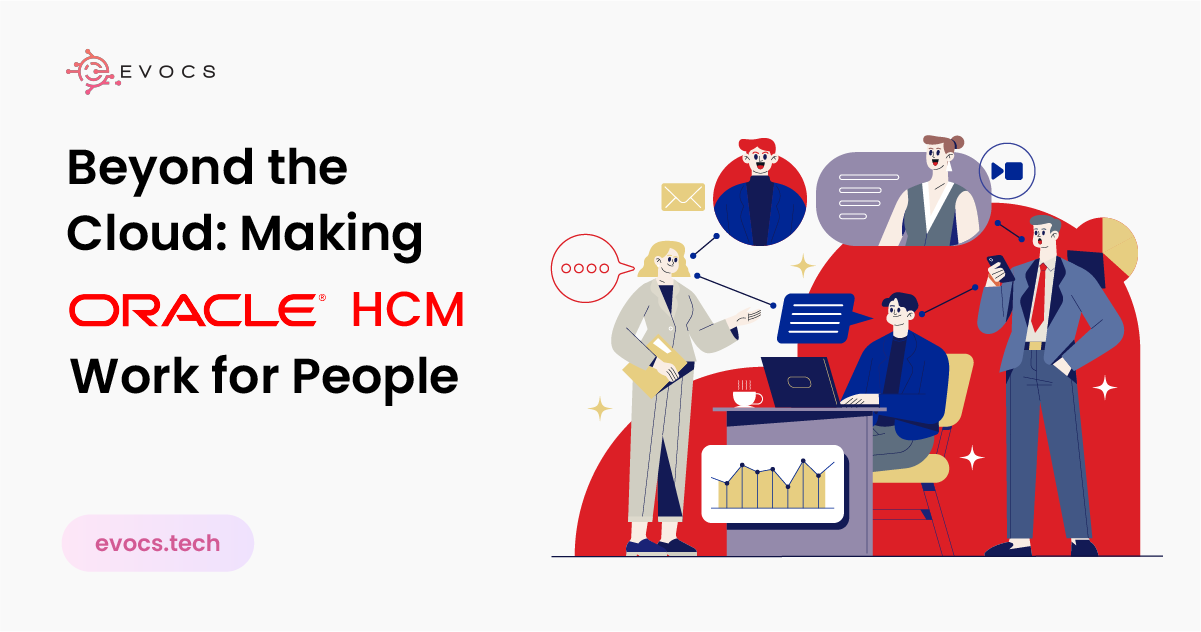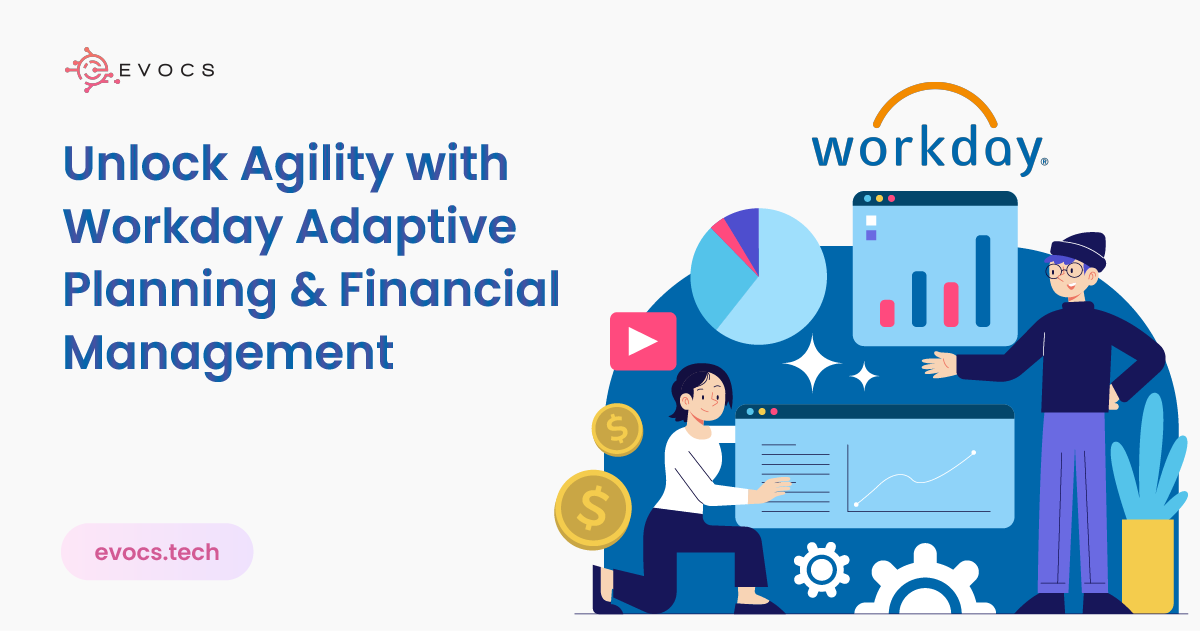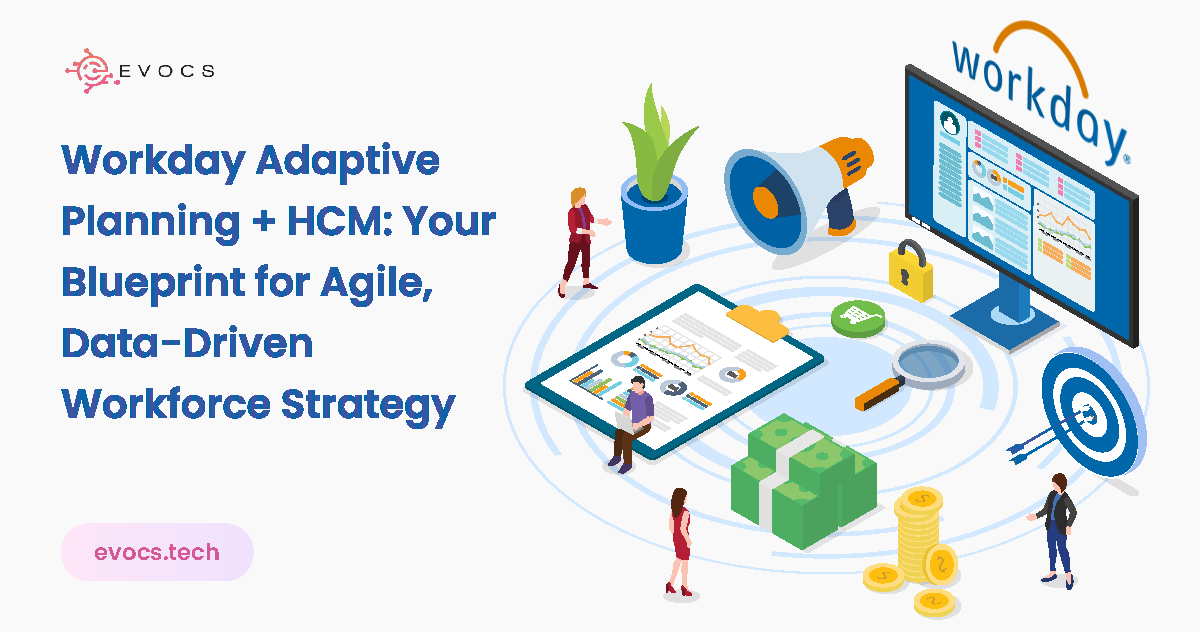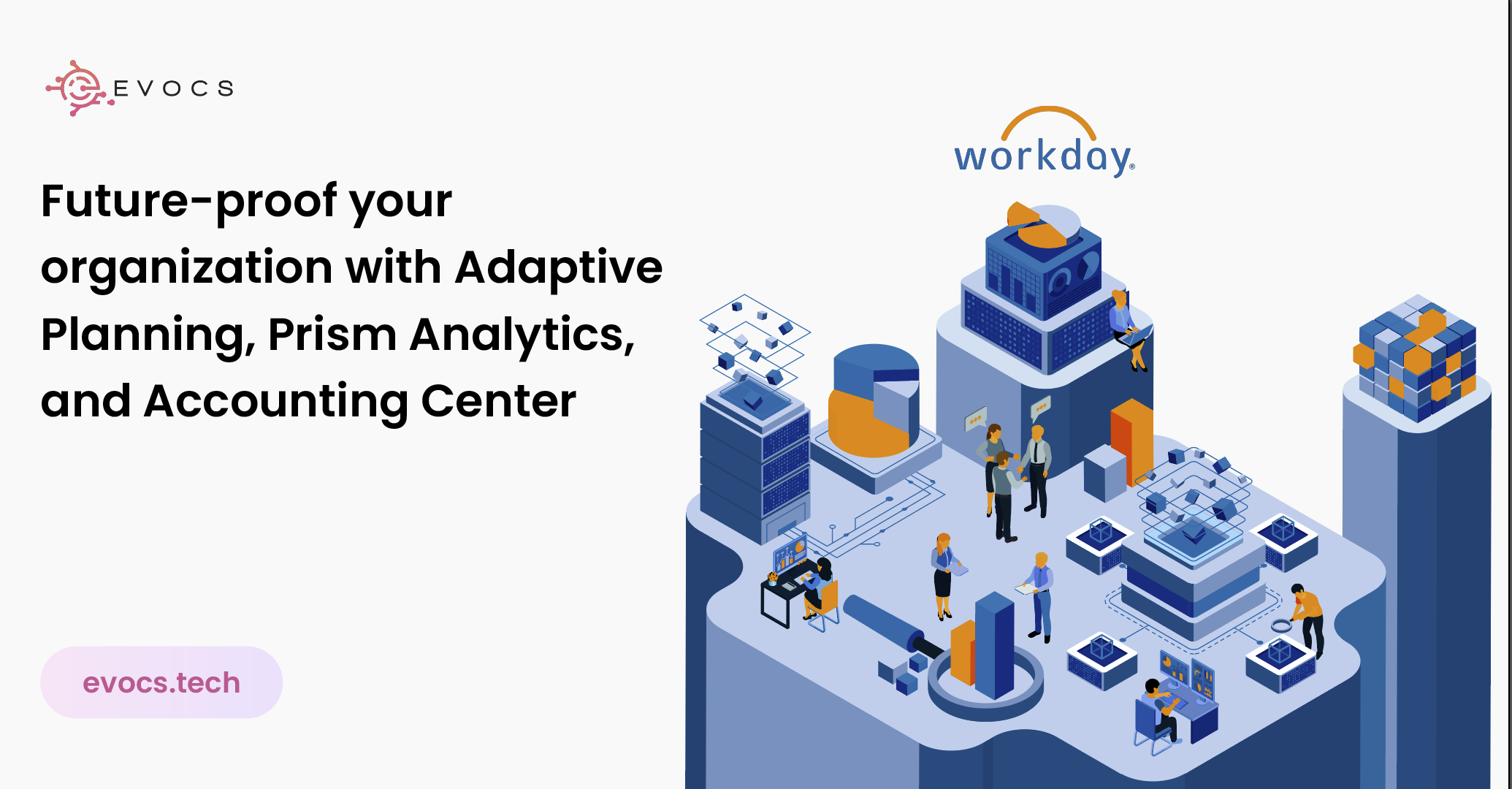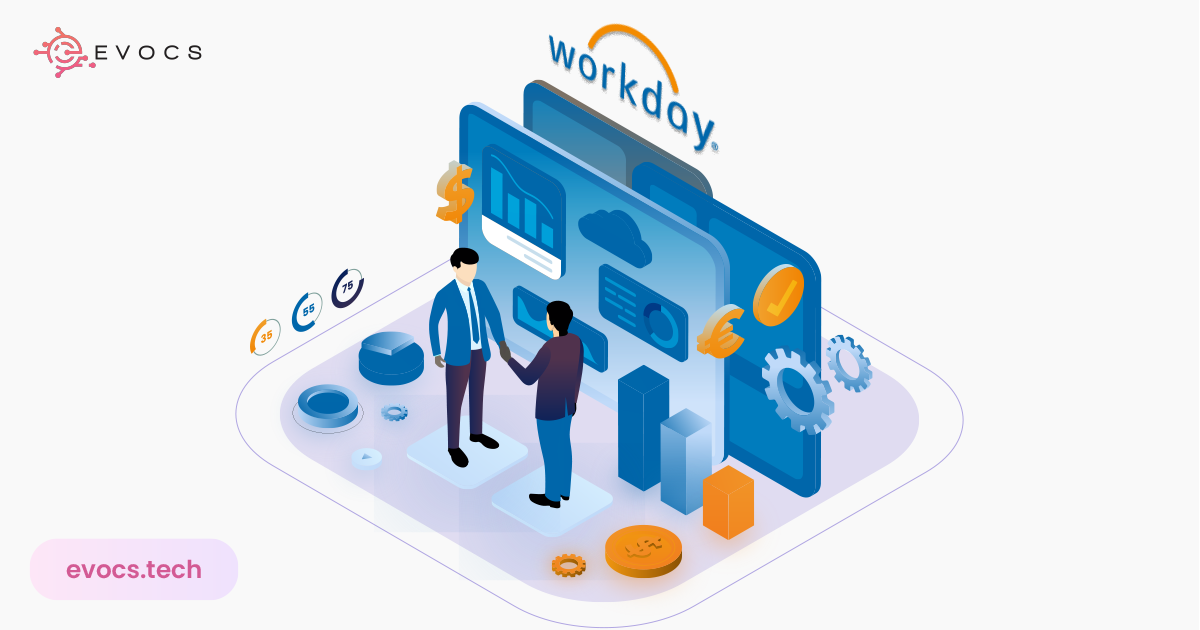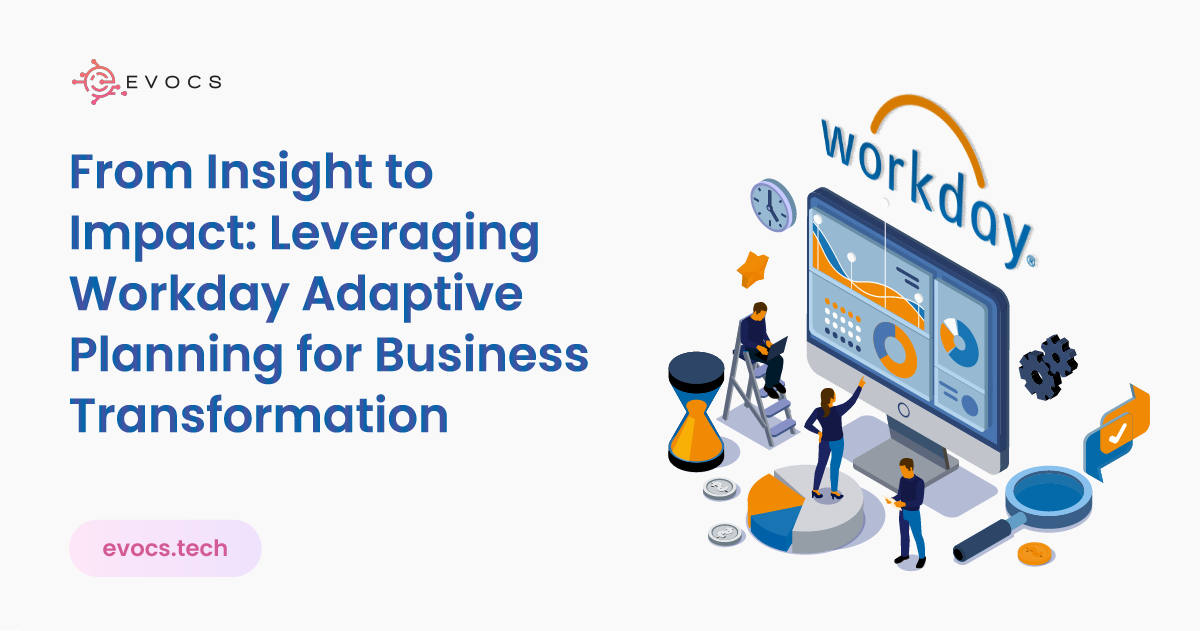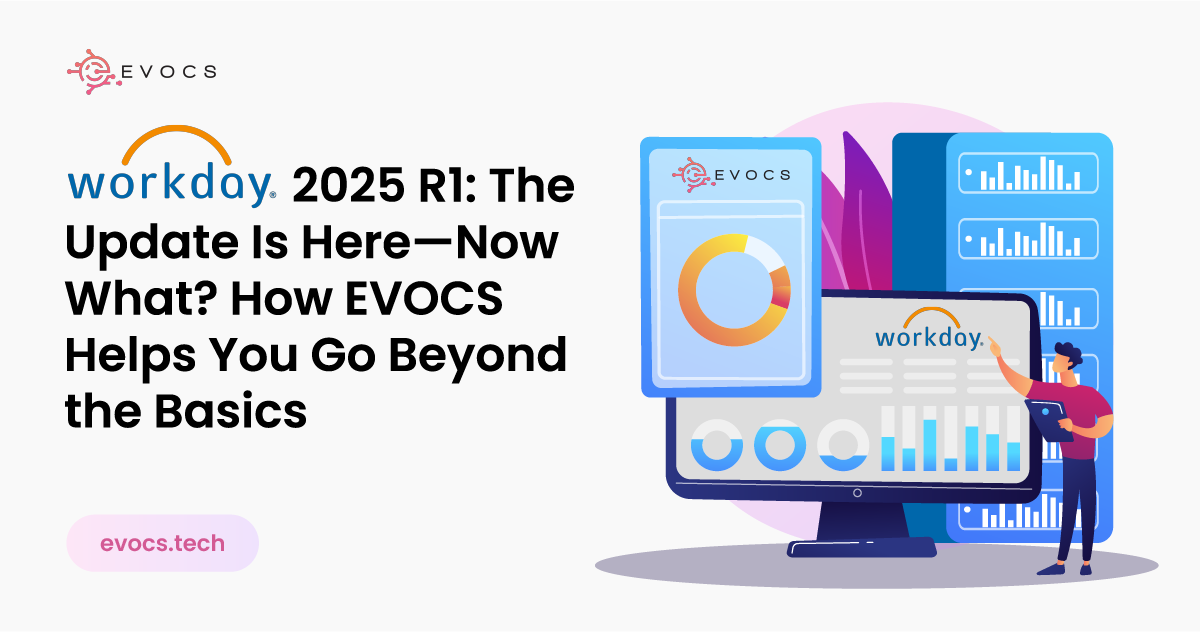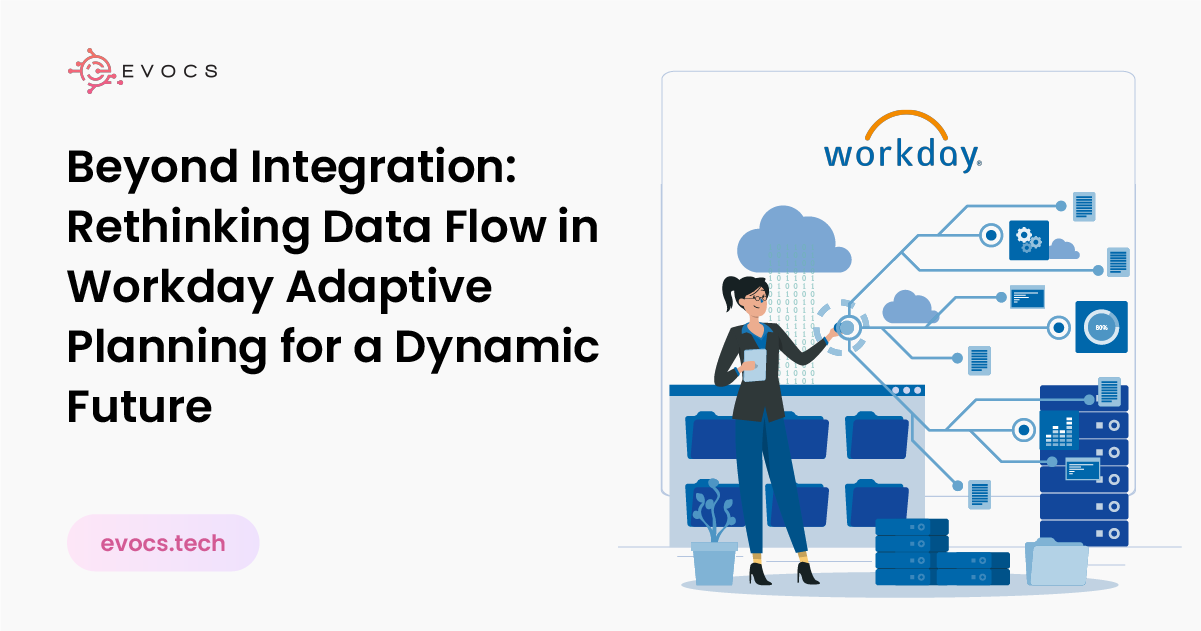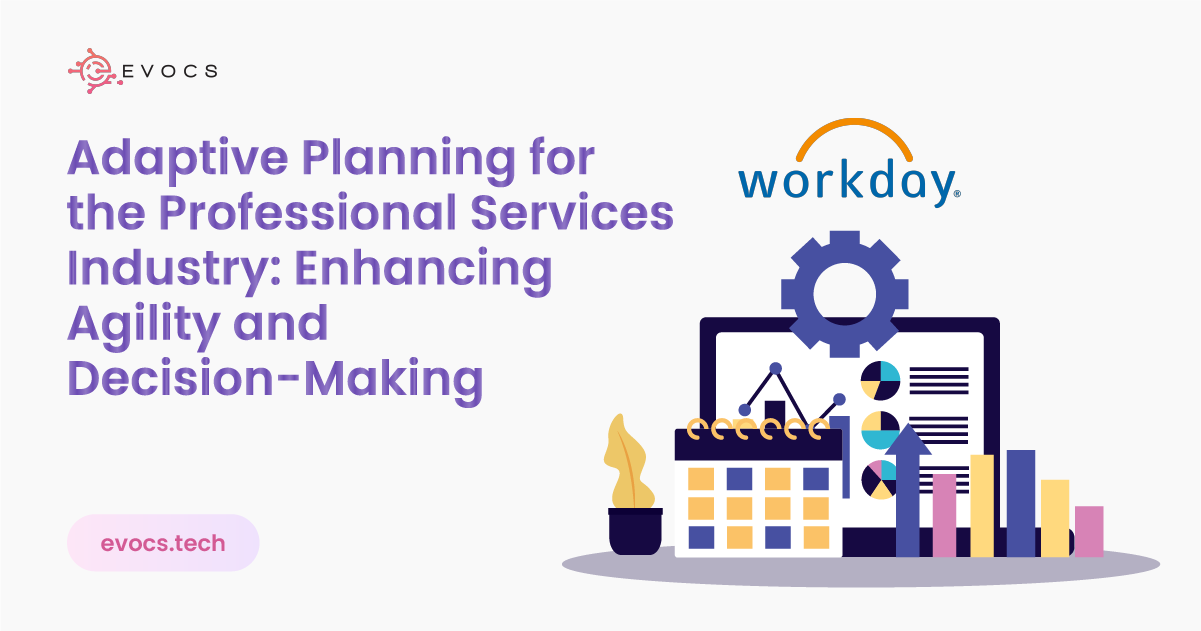Oracle HCM Transformation: A Practical and Human-Centered Guide to Success
Oracle HCM stands at the forefront of modern HR solutions, helping organizations unify theirworkforce strategies in the cloud. Cloud transformation is not only replacing obsolete software witha fresh platform. This offers an opportunity to completely transform your company’s approach ofattracting, nurturing, and developing its staff. But as with any big change, success requiresforethought, people-first attitude, and the appropriate partner; it does not just happen. That iswhere EVOCS enters. Our method of action blends technical knowledge with a thoroughappreciation of how human resources actually operate on the ground. Whether it be streamliningsystems, linking systems, or empowering your staff to utilize new technologies, we are always therefor you. This guide will take you what it actually requires to make Oracle HCM a victory for yourwhole company. 1. Begin with the Grand Picture Before you approach a single Oracle HCM setting, back off. Your HCM setup should specifically support those goals. Faster growth? Better employee retention? A smoother merger? What your company aims to accomplish in the next two to five years? Ensuring every component of the platform is in line with what matters most to your staff and bottom line, we work with your leadership and HR teams to map your corporate strategy to tangible HCM outcomes. 2. Know Where You Are Right Now Few HR teams have a complete grasp of where the true problems lie, despite their understanding that their present systems are cumbersome. This is why we start with a discovery phase that examines your present tools, processes, data, and pain points. We talk to actual users—HR staff, managers, even employees—and use that knowledge to develop a roadmap from your current condition to your desired future. 3. Design With the End User in Mind Though Oracle HCM has strong tools, they only count if people can readily utilise them. Employing Oracle’s Redwood design approach, we personalize experiences by role—that an HR expert views one thing, a store manager another. We help consumers confidently complete chores by keeping things easy, clear, and goal-oriented. 4. Set Everybody on the Same Course Successful HCM rollouts depend on more than just the technology. They need aligned leadership, well defined goals, and common knowledge of what is evolving. Cross-functional steering groups are formed, alignment workshops are conducted, and every stakeholder—payroll to IT—understands what success looks like and how to achieve it. 5. Clean Up Your Data—Really One of the main causes HCM projects get delayed or fail is dirty data. That’s why we assist you arrange and clean your data before Oracle ever sees it. We help your team with cleansing, deduplication, and validation; during migration, we conduct real-time comparisons to guarantee correctness. 6. Connect the Dots Across Systems Oracle HCM is not isolationistic. It must engage with your payroll provider, ERP, identity systems, and other. From SAP to Workday to third-party tax engines, our crew knows how to link Oracle. Reducing hand labor and providing real-time insights, we guarantee your staff data moves smoothly. 7. Develop Confidence With Intelligent Security These questions can make or break user trust: who can see what? Who can approve what? We set up role-based access based on your organizational chart and actual responsibilities so that sensitive data is kept safe and processes remain streamlined. From the beginning, we also include international rules and local privacy laws. 8. Make Change Easier for Everyone Let’s be honest: change is difficult. That’s why we let fate handle change management rather than rely on it. From day one, we offer customized training courses, true communication plans, and in- app help for consumers to be successful. EVOCS views change management as a continuous process that fosters confidence and lessens aggravation rather than as a one-time email. 9. Test as Though It's the Real World We simulate actual situations, not just perform technological tests. What happens if a boss attempts to give approval of a bonus? Payroll manages overtime in which ways. Early problems are found and the system is improved before launch by means of actual users participation in testing. 10. Roll Out in Phases, Not All at Once Attempting to introduce every module for every employee on day one in every country creates pandemonium. Rather, we begin with pilot groups and develop based on feedback in phases. This helps you to learn what works, test setups, and get momentum going. 11. Analytics Should Be Utilized to Guide More Informed Decisions Oracle HCM is about making wiser choices, not just saving information. We enable dashboard displaying performance, engagement, and turnover trends. After that, we teach your teams to act using those insights. The aim is to use data to drive decisions, from identifying high-potential ability to lowering absenteeism. 12. Adjust for Culture and Compliance No two nations—or businesses—are completely identical. That is the reason we assist you to adapt your system for cultural fit and legal conformity. From tax arrangements to linguistic preferences to local processes, we make sure your worldwide launch feels local everywhere. 13. Design for the Long Game with Continuous Help Once you go live, the genuine trip starts. Post-launch assistance from EVOCS adapts to your requirements: Staff Enhancement Need a second pair of hands? We have Oracle-certified specialists ready to integrate with your group. AMS Should us manage user support, repairs, and updates? Our Application Management Services take you taken. To keep the system optimized and your staff supported, we stay at your side. 14. Keep Score, Celebrate Victory You cannot control what you do not measure. We assist you in establishing what success seems like—faster onboarding, less errors, better feedback—then follow it. Additionally, we assist to tell the story of success within so that leadership values your efforts and your team receives the deserved appreciation. 15. Select EVOCS: Experts in People + Platforms Some businesses arrange Oracle. EVOCS changes companies. Your Oracle HCM investment goes further since our distinctive combination of technical breadth, integration experience, and human- centered design is geared toward that. We drive efficiency, insight, and employee engagement everywhere by turning your HR tech


